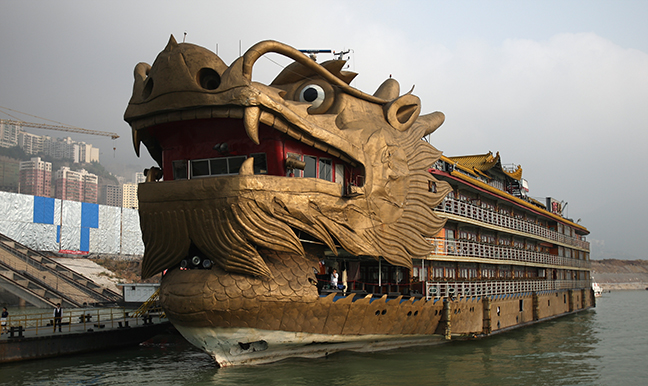

©Rich Beckman

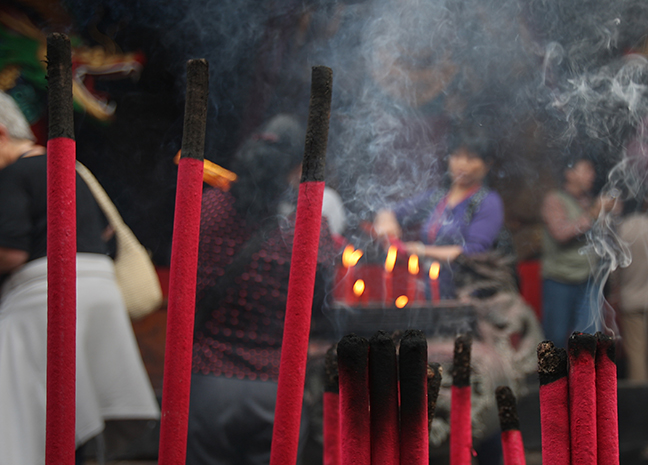
Parishioners light red Buddhist prayer candles at Fengdu Ghost City, a large complex of shrines, temples and monasteries dedicated to the afterlife, located on Ming mountain in Chongqing municipality, China. Much of the original city is now under water, flooded by the opening of the Three Gorges Dam in 2003, and more than 50,000 residents were relocated to a rebuilt city at higher elevations.
©Rich Beckman

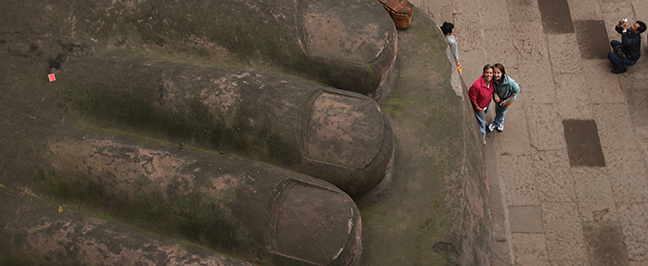
The Leshan Giant Buddha (also known as Dafo) was carved into the side of Mount Lingyun at the confluence of the Minjiang, Dadu and Qingyi rivers near the city of Leshan during the Tang Dynasty. It is actually a statue of Maitreya, who symbolized brightness and happiness and was carved to appease the river gods. It is the largest stone Buddha in the world and a UNESCO World Heritage Site. The Buddha is so enormous that it is said that 100 monks could sit on one foot. Cynny Scott and Emmie Bultemeier pose below.
©Rich Beckman

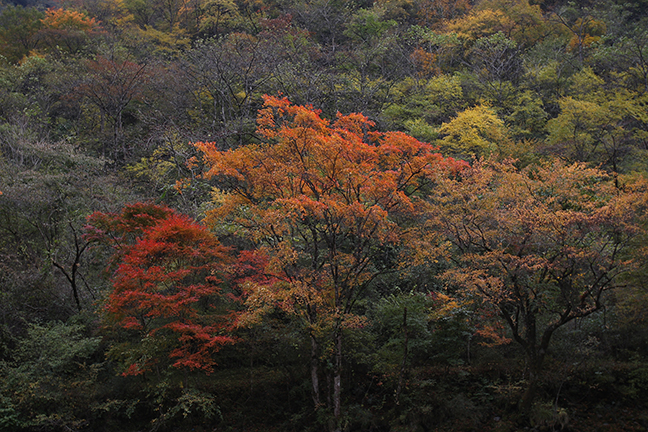
After a treacherous drive from Chengdu via a crumbling one-lane road with blind hairpin turns and nothing resembling a guardrail, we arrived in Wolong. We had somehow avoided oncoming speeding buses, potholes that resembled sinkholes and numerous accident sites, past and present. Perhaps the only silver lining to the devastating Wenchuan Earthquake less than a year later was that it destroyed this road forever. Wolong was a quiet and peaceful mountain community in full fall color.
©Rich Beckman

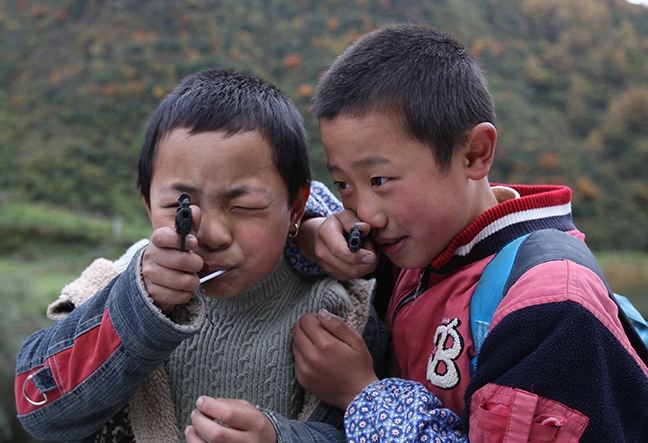
I met these boys walking from the Wolong Panda Center to the Wolong Hotel. I figured if they could shoot me, it would be alright if I "shot" them. Everyone seemed to survive and continued on their merry way.
©Rich Beckman

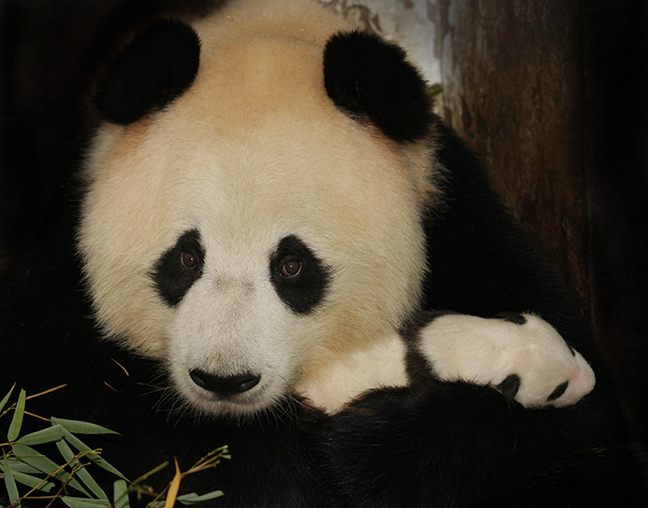
The Wolong Panda Center in Hetaoping was a research and breeding center within the Wolong Nature Reserve. On May 12, 2008, less than a year after these photographs were taken, the Center was badly damaged in the Wenchuan Earthquake and evacuated. It was relocated from Hetaoping to Gengda, also within the Wolong Nature Reserve and now serves as a research, public education, captive breeding and field-training center for the panda reintroduction program. (Photographs in this slide show are of captive animals.)
Giant Pandas are the rarest member of the bear family. They live in bamboo forests in the mountains of western China, where they eat from 26 to 84 pounds of bamboo a day. There are thought to be between 1,500 and 3,000 pandas living in the wild. Captive breeding programs are controversial because most of the native habitat appropriate for reintroducing pandas into the wild has already been destroyed. (1/9)
©Rich Beckman

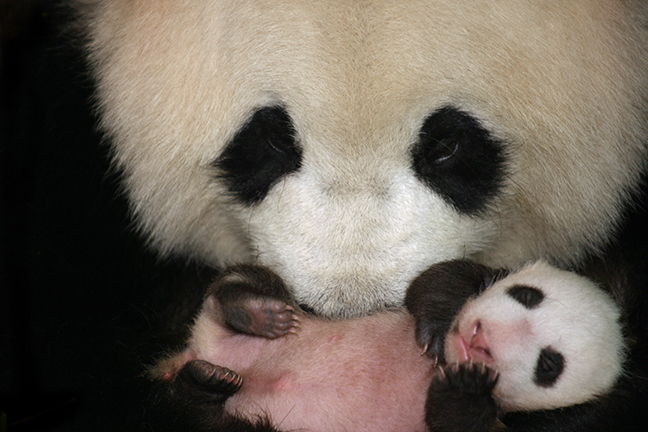
The Wolong Panda Center in Hetaoping was a research and breeding center within the Wolong Nature Reserve. On May 12, 2008, less than a year after these photographs were taken, the Center was badly damaged in the Wenchuan Earthquake and evacuated. It was relocated from Hetaoping to Gengda, also within the Wolong Nature Reserve and now serves as a research, public education, captive breeding and field-training center for the panda reintroduction program. (Photographs in this slide show are of captive animals.)
Giant Pandas are the rarest member of the bear family. They live in bamboo forests in the mountains of western China, where they eat from 26 to 84 pounds of bamboo a day. There are thought to be between 1,500 and 3,000 pandas living in the wild. Captive breeding programs are controversial because most of the native habitat appropriate for reintroducing pandas into the wild has already been destroyed. (2/9)
©Rich Beckman

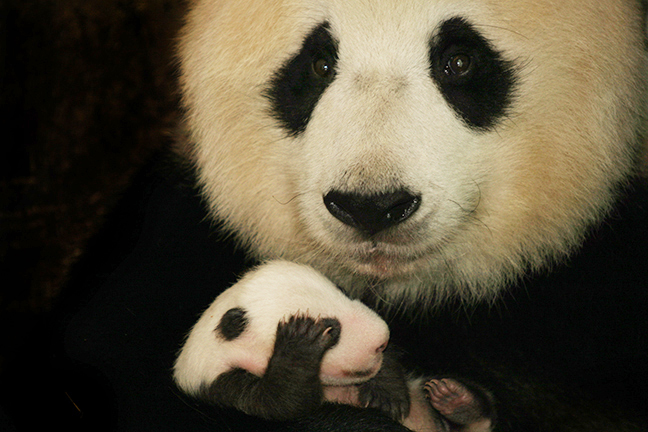
The Wolong Panda Center in Hetaoping was a research and breeding center within the Wolong Nature Reserve. On May 12, 2008, less than a year after these photographs were taken, the Center was badly damaged in the Wenchuan Earthquake and evacuated. It was relocated from Hetaoping to Gengda, also within the Wolong Nature Reserve and now serves as a research, public education, captive breeding and field-training center for the panda reintroduction program. (Photographs in this slide show are of captive animals.)
Giant Pandas are the rarest member of the bear family. They live in bamboo forests in the mountains of western China, where they eat from 26 to 84 pounds of bamboo a day. There are thought to be between 1,500 and 3,000 pandas living in the wild. Captive breeding programs are controversial because most of the native habitat appropriate for reintroducing pandas into the wild has already been destroyed. (3/9)
©Rich Beckman

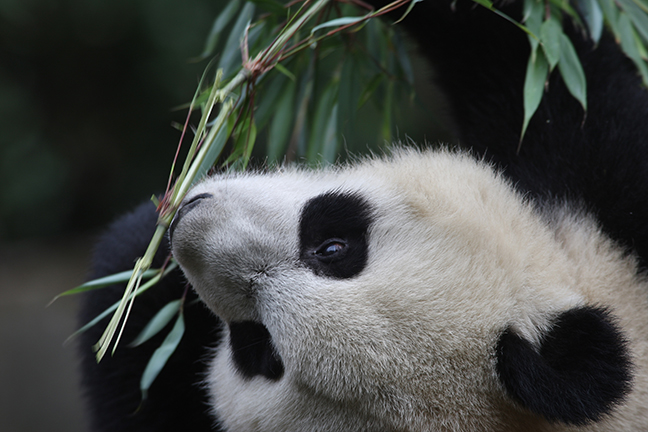
The Wolong Panda Center in Hetaoping was a research and breeding center within the Wolong Nature Reserve. On May 12, 2008, less than a year after these photographs were taken, the Center was badly damaged in the Wenchuan Earthquake and evacuated. It was relocated from Hetaoping to Gengda, also within the Wolong Nature Reserve and now serves as a research, public education, captive breeding and field-training center for the panda reintroduction program. (Photographs in this slide show are of captive animals.)
Giant Pandas are the rarest member of the bear family. They live in bamboo forests in the mountains of western China, where they eat from 26 to 84 pounds of bamboo a day. There are thought to be between 1,500 and 3,000 pandas living in the wild. Captive breeding programs are controversial because most of the native habitat appropriate for reintroducing pandas into the wild has already been destroyed. (4/9)
©Rich Beckman

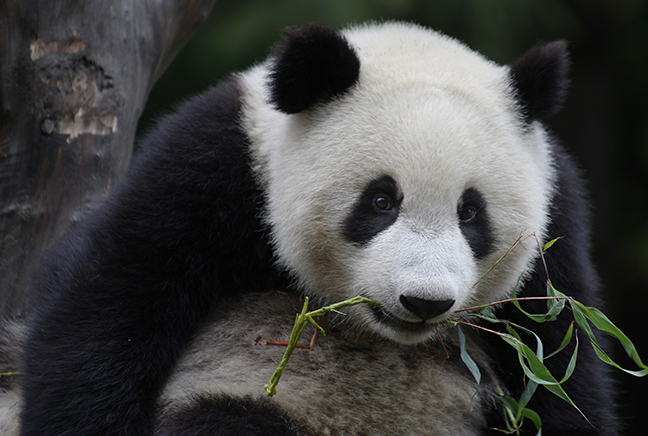
The Wolong Panda Center in Hetaoping was a research and breeding center within the Wolong Nature Reserve. On May 12, 2008, less than a year after these photographs were taken, the Center was badly damaged in the Wenchuan Earthquake and evacuated. It was relocated from Hetaoping to Gengda, also within the Wolong Nature Reserve and now serves as a research, public education, captive breeding and field-training center for the panda reintroduction program. (Photographs in this slide show are of captive animals.)
Giant Pandas are the rarest member of the bear family. They live in bamboo forests in the mountains of western China, where they eat from 26 to 84 pounds of bamboo a day. There are thought to be between 1,500 and 3,000 pandas living in the wild. Captive breeding programs are controversial because most of the native habitat appropriate for reintroducing pandas into the wild has already been destroyed. (5/9)
©Rich Beckman

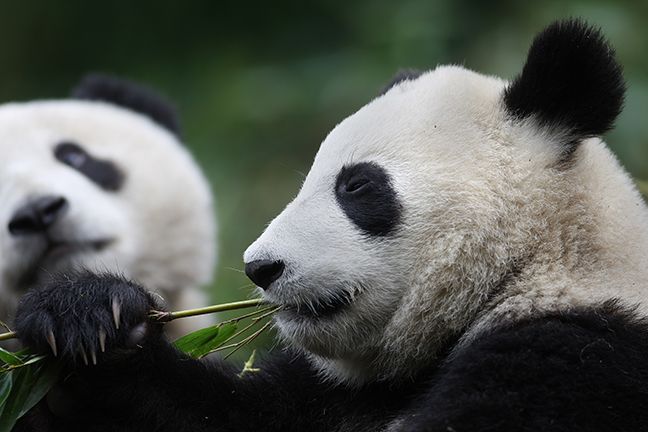
The Wolong Panda Center in Hetaoping was a research and breeding center within the Wolong Nature Reserve. On May 12, 2008, less than a year after these photographs were taken, the Center was badly damaged in the Wenchuan Earthquake and evacuated. It was relocated from Hetaoping to Gengda, also within the Wolong Nature Reserve and now serves as a research, public education, captive breeding and field-training center for the panda reintroduction program. (Photographs in this slide show are of captive animals.)
Giant Pandas are the rarest member of the bear family. They live in bamboo forests in the mountains of western China, where they eat from 26 to 84 pounds of bamboo a day. There are thought to be between 1,500 and 3,000 pandas living in the wild. Captive breeding programs are controversial because most of the native habitat appropriate for reintroducing pandas into the wild has already been destroyed. (6/9)
©Rich Beckman

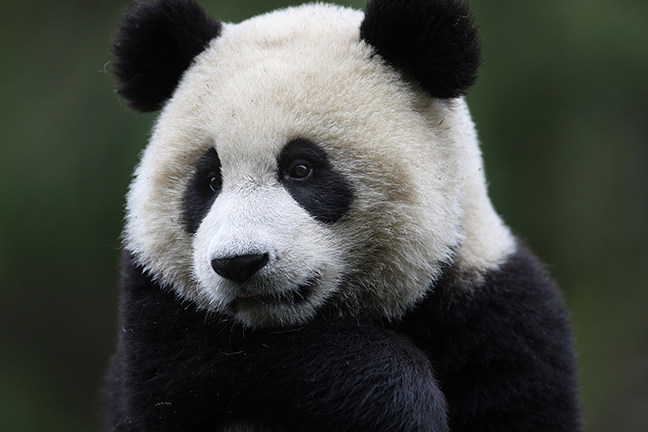
The Wolong Panda Center in Hetaoping was a research and breeding center within the Wolong Nature Reserve. On May 12, 2008, less than a year after these photographs were taken, the Center was badly damaged in the Wenchuan Earthquake and evacuated. It was relocated from Hetaoping to Gengda, also within the Wolong Nature Reserve and now serves as a research, public education, captive breeding and field-training center for the panda reintroduction program. (Photographs in this slide show are of captive animals.)
Giant Pandas are the rarest member of the bear family. They live in bamboo forests in the mountains of western China, where they eat from 26 to 84 pounds of bamboo a day. There are thought to be between 1,500 and 3,000 pandas living in the wild. Captive breeding programs are controversial because most of the native habitat appropriate for reintroducing pandas into the wild has already been destroyed. (7/9)
©Rich Beckman

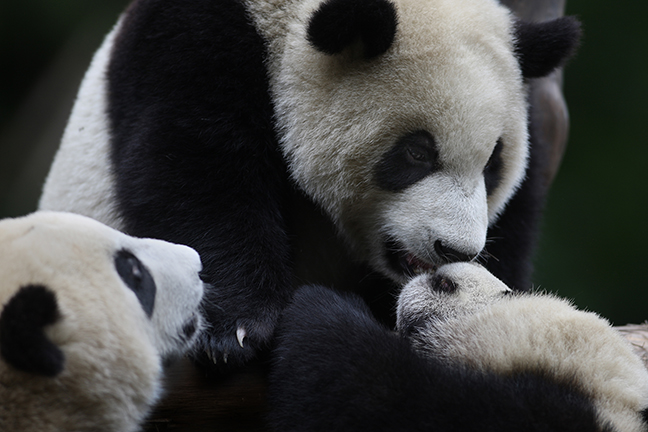
The Wolong Panda Center in Hetaoping was a research and breeding center within the Wolong Nature Reserve. On May 12, 2008, less than a year after these photographs were taken, the Center was badly damaged in the Wenchuan Earthquake and evacuated. It was relocated from Hetaoping to Gengda, also within the Wolong Nature Reserve and now serves as a research, public education, captive breeding and field-training center for the panda reintroduction program. (Photographs in this slide show are of captive animals.)
Giant Pandas are the rarest member of the bear family. They live in bamboo forests in the mountains of western China, where they eat from 26 to 84 pounds of bamboo a day. There are thought to be between 1,500 and 3,000 pandas living in the wild. Captive breeding programs are controversial because most of the native habitat appropriate for reintroducing pandas into the wild has already been destroyed. (8/9)
©Rich Beckman

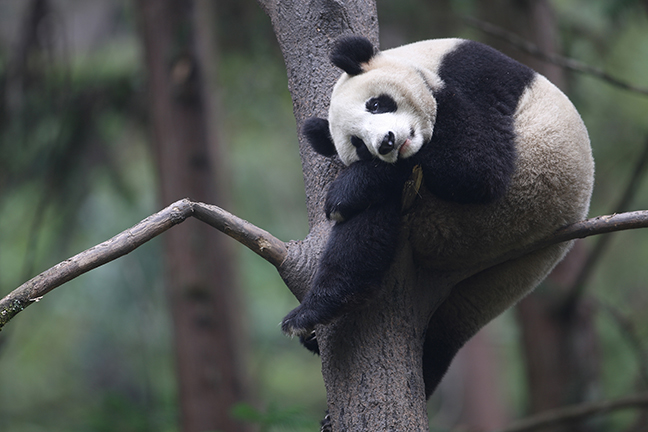
The Wolong Panda Center in Hetaoping was a research and breeding center within the Wolong Nature Reserve. On May 12, 2008, less than a year after these photographs were taken, the Center was badly damaged in the Wenchuan Earthquake and evacuated. It was relocated from Hetaoping to Gengda, also within the Wolong Nature Reserve and now serves as a research, public education, captive breeding and field-training center for the panda reintroduction program. (Photographs in this slide show are of captive animals.)
Giant Pandas are the rarest member of the bear family. They live in bamboo forests in the mountains of western China, where they eat from 26 to 84 pounds of bamboo a day. There are thought to be between 1,500 and 3,000 pandas living in the wild. Captive breeding programs are controversial because most of the native habitat appropriate for reintroducing pandas into the wild has already been destroyed. (9/9)
©Rich Beckman

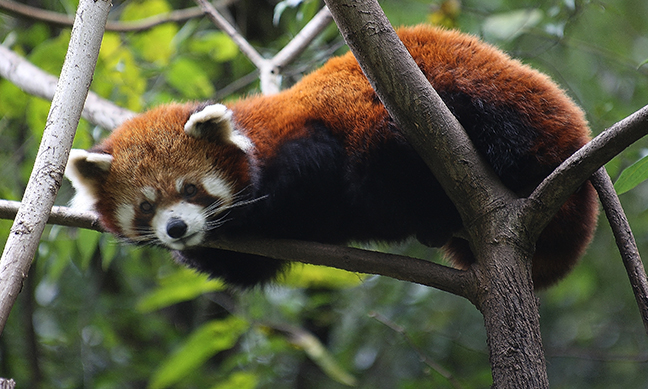
The red panda (lesser panda) is native to the eastern Himalayas and southwestern China. Their population (about 10,000) is declining and threatened by habitat loss and fragmentation, poaching and inbreeding, although they are a protected species. They spend most of their lives in trees and are most active at night. Although they eat bamboo, they also eat fruit, acorns, roots and eggs.
©Rich Beckman